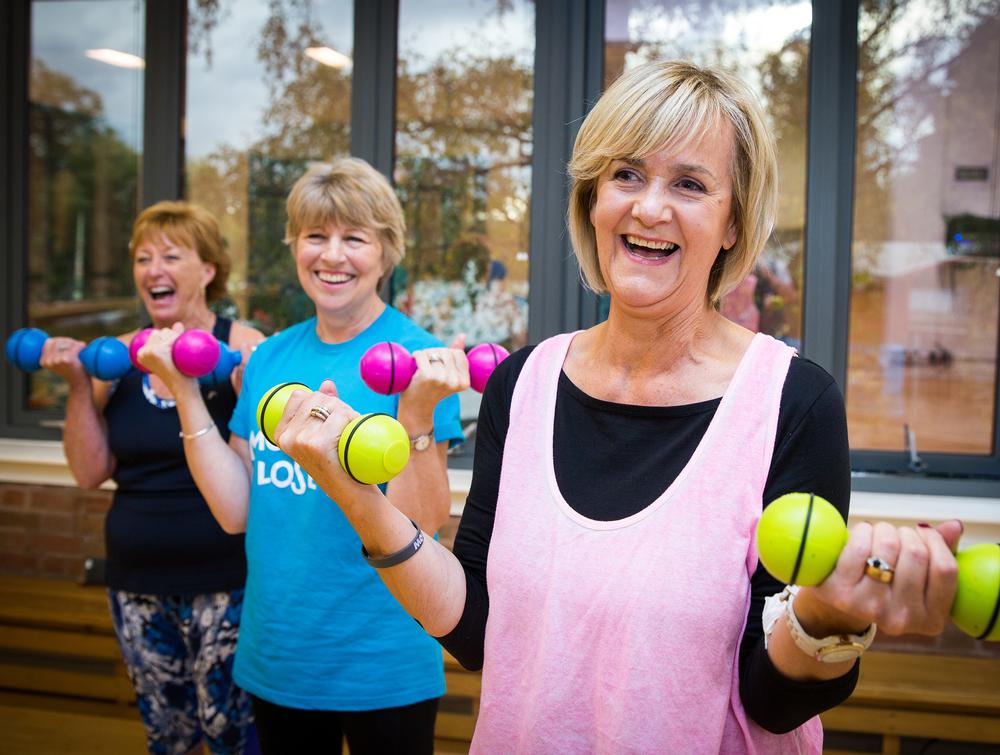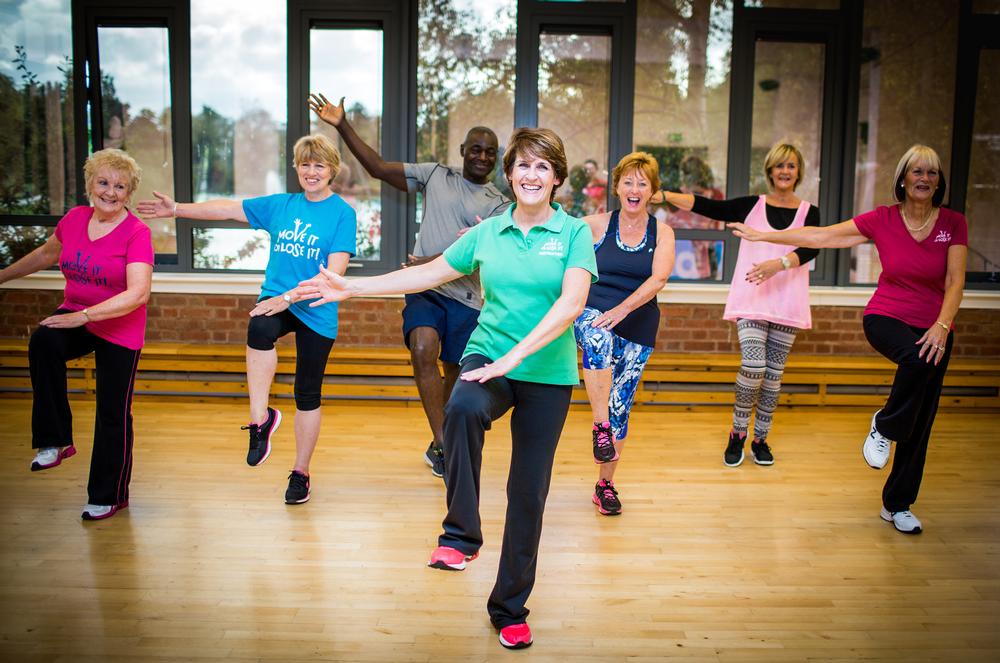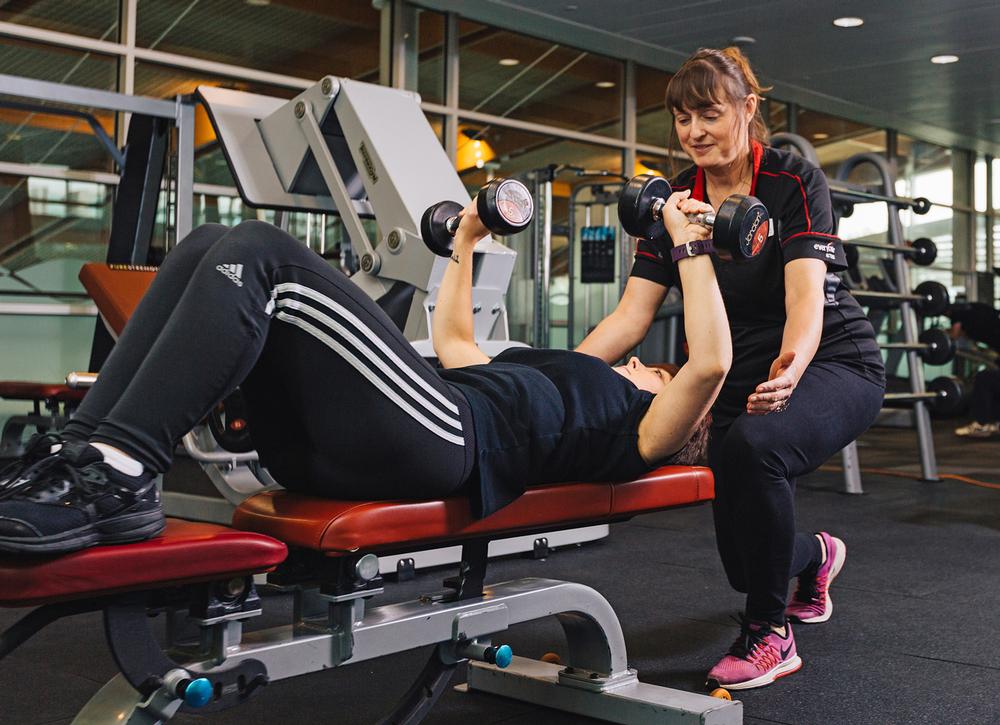Two thirds of the NHS budget is currently soaked up by the treatment of long term conditions and the overlap between such illnesses and age is huge, as the proportion of people living with a health condition increases by 10 per cent every 10 years.
However, although health decline is often assumed to be an inevitable part of old age, this doesn’t have to be the case. Analysis published by the British Medical Journal showed that poor health is closely related to a drop in fitness, so if people actually stayed active they would be less likely to get ill.
Getting people in their 50s, 60s, 70s, 80s and even 90s physically active could have massive wins all round: saving the NHS billions; giving more people extra healthy years of their life and generating new audiences and revenues for the health and fitness sector. The fact that older people often like to exercise late morning also provides a good use for the club during the quieter periods.
Overlooked audience
The over 50s is a hugely diverse market with many segments, and it is not true that older people can’t afford memberships. According to ukactive’s Reimagining Ageing report, 70 per cent of the nation’s wealth is held by individuals aged over 50 and, in 2017, this cohort spent £320bn. However, they are generally unused to spending their money on their health, so it can be difficult to change their mindset.
To bring older people into facilities, operators will need to make sure they have well designed workouts, which are both fun and social. Staff also need to be appropriately trained: no one wants to be patronised by someone who is 40 years younger and has no empathy regarding their mobility or health issues.
“It’s really important to take a soft, nurturing approach. You can’t be pushy, because they can easily become stubborn and rebel,” says Kira Mahal, founder of Motivate PT. “We match our older clients with PTs who have some life experience and are able to relate to them more. Usually we find the tipping point in motivation comes when they feel the benefits, whether that be finding it easier to get out of bed, or noticing that a pain has started to dissipate.”
A few operators are already starting to design clubs with older clients in mind, including Lanes Health Club in Sussex; eActiv’s Health Lounge which is designed to feel like a lounge, and Tony de Leede’s latest venture, Club W, which has been curated to appeal to women over 50.
Fitness ambassadors
“As people get older, they like a chat and crave community, conversation, connection and comfort, and this is the environment we try to provide at Club W,” says de Leede, who has gone to great lengths to remove any form of ‘gymtimidation’. For example, the word exercise is never uttered, instead terms like activity and mindfulness are used.
The club has places to chat and relax and the workout experiences are all delivered virtually and in bite sized chunks, from five to 20 minutes. During a visit, people might do a bit of pilates, some tai chi, have a massage, listen to a short lecture, sit in an O2CHAIR to breathe deeply and have a chat. “It’s like a health buffet,” he says.
Rather than employ fitness instructors, Club W employs hosts who talk to members and even accompany them to classes. This is backed up by the use of fitness ambassadors: enthusiastic members who are given free, or heavily discounted memberships, in return for buddying up with newbies.
“Young people look for a tribe, older people look for community. You are much more likely to turn up to exercise if you have made the appointment to meet someone,” says de Leede.
Behaviour change
Employing older staff is important if operators are serious about attracting older people into clubs, as they need to see people they can relate to. So could de Leede’s idea of recruiting enthusiastic members as hosts and paying them in workouts become a new industry trend?
Active IQ believes older members can be great evangelists for the industry and, in response, has designed a qualification to formalise this role. The Level 2 Certificate in Promoting Community Health and Wellbeing takes 60 hours to complete and equips trainees to help influence behaviour change in terms of getting active, giving up smoking and improving eating and drinking habits.
“People in their 50s, 60s and 70s can make a significant impact as a fitness motivator, able to promote physical activity and a healthy lifestyle and bring a mix of life experience, empathy and personal insight into how it feels to be exercising in older age,” says Active IQ managing director, Jenny Patrickson.
“Clubs looking to recruit older fitness motivators will likely find them already working out in their gym: offering a little advice to others and welcoming new people. A poster in the changing room could be just the nudge they need to get more involved.”
Recruiting older staff and volunteer hosts is a really easy way of making your club more inclusive, and if the head of PT at Future Fit Training, Paul Swainson, is to be believed, it should be getting easier to find them. He has noticed an appetite among baby boomers to quit their jobs and re-train as fitness professionals.
Role models
“These corporate runaways have a lot to offer in the industry in terms of creating a more inclusive environment and providing a role model for members of all ages: younger gym members are completely inspired by seeing someone in their 60s looking fit,” says Swainson. “Also, older trainers bring life experience to their work, which is very valuable.
“Having faced, and overcome, various issues in terms of staying active, they are in a great position to advise clients on how to overcome their barriers to success. Plus, those coming from high-powered executive jobs also bring fantastic organisational, management and IT skills with them.”
However, welcoming older people into clubs does throw up a few challenges, especially if they are very elderly, suffer from a long term condition, or have mobility issues, which is why CIMSPA has launched the new professional standard, The Working with People with Long Term Conditions Professional Standard.
UPSKILLING instructors
“This is the product of our consultation across the health and sport sectors,” says CIMSPA’s head of education, Colin Huffen. “It provides practitioners with the framework of skills and knowledge required to work with people with single long-term conditions, or at risk of developing a long-term condition and people who present with co-morbidities.”
Serco Leisure has also recently introduced a new CIMSPA-accredited one day workshop designed to upskill instructors on how to better understand the motivations and goals of older people. Developed along with Life Fitness Academy, the course covers workout design and the interpersonal skills needed to make sure the class is fun and social.
“In later life, it’s key that people maintain their quads, as these have a huge impact on reducing falls, and improving balance in general,” says Paul Street, national health and fitness manager at Serco Leisure. “Our workshop looks at the science behind these kinds of issues, enabling staff to develop individually focused programmes.”
Move it or Lose it also trains instructors to work with elderly people, including chair-based exercise programmes. They have been designed according to feedback from thousands of attendees who say they want the session to be about chatting and laughing as well as the health benefits.
“The friendly atmosphere and ability to socialise, as well as exercise, is key to getting older people to attend week after week,” says Move it or Lose it CEO, Julie Robinson. “The exercise session includes flexibility, aerobics, balance and strength (FABS) and the part they most enjoy is the exercise to music, which is really motivational.
Preventative care
As our society ages, the government is committed to spending £300m to support sectors to develop opportunities to reorient the structure of society and the health and fitness sector needs to be part of the solution. According to NHS advisor, Sir Muir Gray, as the population ages and the government sets out its preventative care strategy, getting older people exercising will be the key to the survival of the NHS.
Reaching this market will involve designing appropriate workouts led by suitably qualified people. There is a strong business case to do so, and also a simple reason: the sector could add years to people’s lives, prevent them becoming housebound and keep them living independently. What could be more rewarding?
Read our feature on ageing and fitness from Sir Muir Gray in the February 2019 issue of HCM


























































